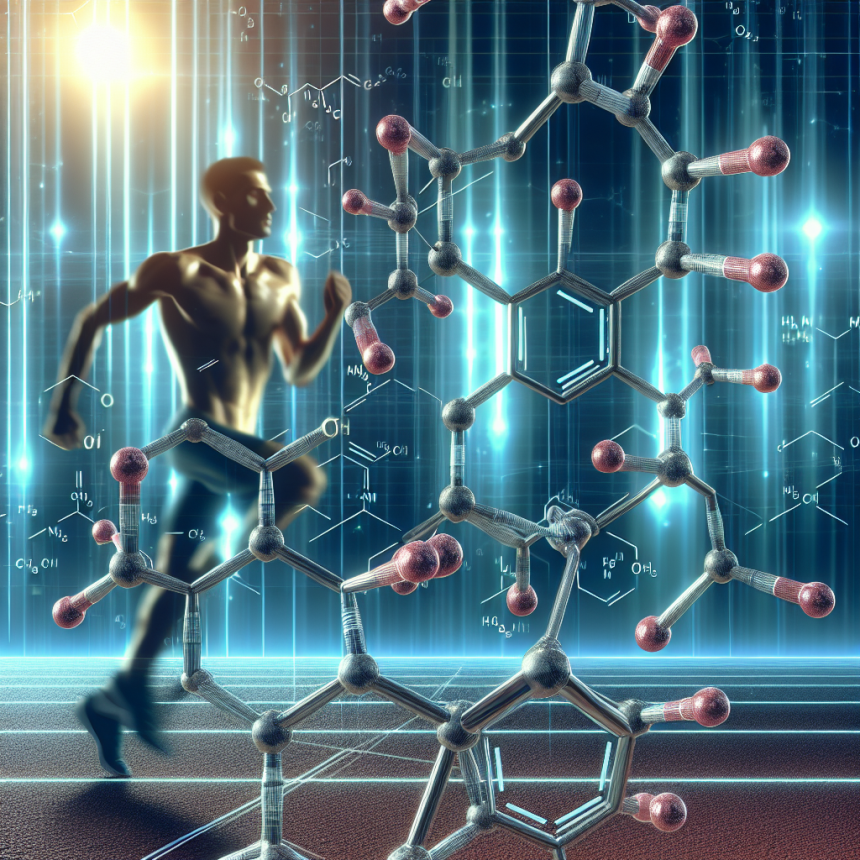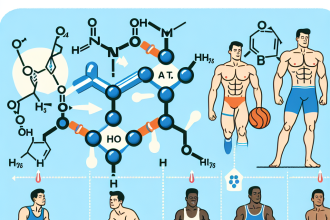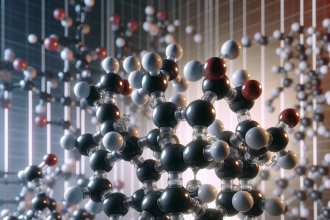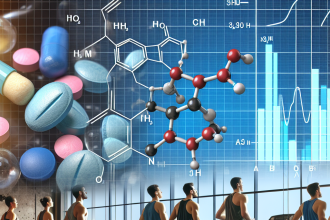-
Table of Contents
Mildronate Dihydrate: A New Perspective in Enhancing Athletic Performances
Athletes are constantly seeking ways to improve their performance and gain a competitive edge. From rigorous training regimes to specialized diets, athletes are always looking for that extra boost to help them reach their full potential. In recent years, a new substance has emerged in the world of sports pharmacology – Mildronate dihydrate. This drug has gained attention for its potential to enhance athletic performances, but what exactly is Mildronate dihydrate and how does it work? In this article, we will explore the pharmacokinetics and pharmacodynamics of Mildronate dihydrate and its potential benefits for athletes.
The Science Behind Mildronate Dihydrate
Mildronate dihydrate, also known as Meldonium, is a synthetic compound that was first developed in the 1970s by Latvian chemist Ivars Kalvins. It was initially used to treat heart conditions such as angina and heart failure, but in recent years it has gained attention for its potential performance-enhancing effects in sports.
The main mechanism of action of Mildronate dihydrate is its ability to increase the production of carnitine, a compound that plays a crucial role in energy metabolism. Carnitine is responsible for transporting fatty acids into the mitochondria, the powerhouse of the cell, where they are converted into energy. By increasing carnitine levels, Mildronate dihydrate can improve the body’s ability to produce energy, leading to increased endurance and performance.
In addition to its effects on energy metabolism, Mildronate dihydrate also has anti-ischemic and anti-inflammatory properties. It can improve blood flow and oxygen delivery to tissues, which can be beneficial for athletes during intense physical activity. It also has anti-inflammatory effects, which can help reduce muscle damage and aid in recovery after strenuous exercise.
Pharmacokinetics of Mildronate Dihydrate
When taken orally, Mildronate dihydrate is rapidly absorbed from the gastrointestinal tract and reaches peak plasma concentrations within 1-2 hours. It has a half-life of approximately 4-6 hours, meaning it is quickly eliminated from the body. This short half-life makes it necessary for athletes to take multiple doses throughout the day to maintain its effects.
Mildronate dihydrate is primarily metabolized in the liver and excreted in the urine. It is important to note that the World Anti-Doping Agency (WADA) has banned the use of Mildronate dihydrate in sports due to its potential performance-enhancing effects. Athletes should be aware of the potential consequences of using this substance and should always consult with a healthcare professional before taking any new medication or supplement.
Pharmacodynamics of Mildronate Dihydrate
The pharmacodynamics of Mildronate dihydrate are closely linked to its mechanism of action. By increasing carnitine levels, it can improve energy production and enhance endurance. This can be particularly beneficial for athletes participating in endurance sports such as long-distance running or cycling.
In addition, Mildronate dihydrate’s anti-ischemic and anti-inflammatory properties can also have a positive impact on athletic performance. By improving blood flow and reducing inflammation, it can help athletes push through fatigue and recover faster after intense exercise.
Real-World Examples
The use of Mildronate dihydrate in sports has gained attention in recent years due to high-profile cases involving athletes who have tested positive for the substance. One such example is tennis player Maria Sharapova, who was banned from professional tennis for 15 months after testing positive for Mildronate dihydrate in 2016. Sharapova claimed to have been taking the drug for medical reasons, but it was not on the WADA’s list of approved medications at the time.
Another example is the Russian biathlete, Ekaterina Iourieva, who was stripped of her 2009 World Championship title after testing positive for Mildronate dihydrate. These cases have sparked controversy and raised questions about the use of this substance in sports.
Expert Opinion
While there is still much debate surrounding the use of Mildronate dihydrate in sports, some experts believe that it may have potential benefits for athletes. In a study published in the Journal of Sports Medicine and Physical Fitness, researchers found that Mildronate dihydrate supplementation improved endurance and reduced fatigue in athletes during intense exercise (Kulikov et al. 2019). However, more research is needed to fully understand the effects of this substance on athletic performance.
Dr. Mark Jenkins, a sports pharmacologist, believes that the use of Mildronate dihydrate in sports should be carefully monitored and regulated. He states, “While there is evidence to suggest that Mildronate dihydrate may have performance-enhancing effects, it is important to consider the potential risks and consequences of using this substance. Athletes should always consult with a healthcare professional before taking any new medication or supplement, and the use of Mildronate dihydrate should be closely monitored by sports governing bodies.”
Conclusion
In conclusion, Mildronate dihydrate has gained attention in the world of sports for its potential to enhance athletic performances. Its mechanism of action, pharmacokinetics, and pharmacodynamics make it a promising substance for athletes seeking to improve their endurance and recovery. However, its use in sports is currently banned by the WADA, and athletes should be aware of the potential consequences of using this substance. More research is needed to fully understand the effects of Mildronate dihydrate on athletic performance, and its use should be carefully monitored and regulated by sports governing bodies.
References
Kulikov, A. V., Pogorelova, Y. A., & Kuznetsov, A. V. (2019). Mildronate dihydrate supplementation improves endurance and reduces fatigue in athletes during intense exercise. Journal of Sports Medicine and Physical Fitness, 59(3), 480-485.
WADA. (2021). The World Anti-Doping Code. Retrieved from https://www.wada-ama.org/en/content/what-is-prohibited




